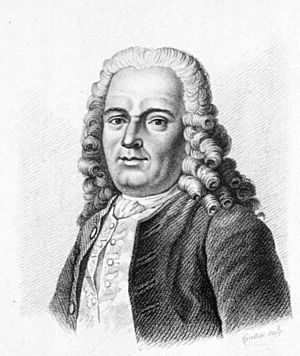Jean-Louis Petit (surgeon) facts for kids
Jean-Louis Petit (born March 13, 1674 – died April 20, 1750) was a very important French surgeon. He is known for inventing a special screw-type tourniquet, which is a device used to stop bleeding during surgery. His work greatly improved how doctors performed operations in his time.
Contents
Early Life and Education
Jean-Louis Petit was born in Paris, France. From a young age, he was very interested in the human body and how it works. This field of study is called anatomy. He worked hard to learn all about surgery.
Becoming a Master Surgeon
In 1700, Jean-Louis Petit earned his master's certificate in surgery in Paris. This meant he was officially recognized as a skilled surgeon. He quickly became known for his talent and experience.
Important Roles and Achievements
Jean-Louis Petit held several important positions during his career. These roles showed how respected he was in the medical world.
Joining the Royal Academies
In 1715, he became a member of the French Royal Academy of Sciences. This was a group of the smartest scientists in France. Later, in 1731, King Louis XV chose him to be the director of the French Royal Academy of Surgery. This new academy was created to improve surgical practices.
His Famous Works
Petit gained a lot of fame for his skills. He wrote detailed reports about many medical cases he handled. These included cases of serious bleeding (called hemorrhage) and problems with the tear ducts (known as lacrimal fistula). He also performed operations on the frenum, which is a small fold of tissue in the body.
His most important writings were:
- A book about bone diseases.
- A large book about surgical operations. He worked on this book for 12 years! It was finished after his death by another surgeon, François-Dominique Lesné. This book became a key guide for surgeons for many years.
Jean-Louis Petit's dedication to learning and sharing his knowledge helped surgery become a more advanced and respected field.


